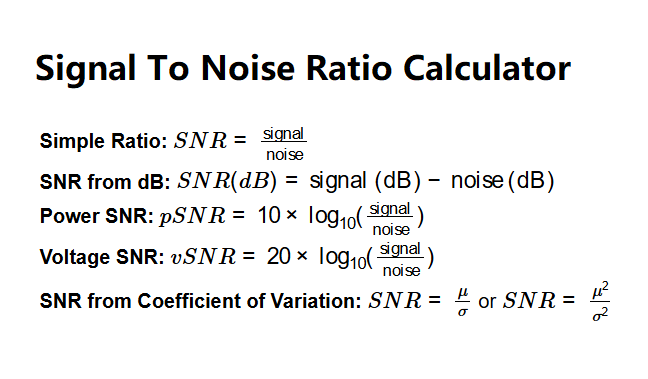 Home
Home
 Back
Back

Signal-to-Noise Ratio Calculator computes the ratio of signal strength to noise level using various methods.
It is used in telecommunications, audio engineering, and signal processing to assess signal quality.
Select the SNR type and input the required values. The formulas are:
Use the form above to input values, and the calculator will provide the SNR.
Example (Voltage SNR): Signal = 6 V, Noise = 4 V.
Calculation: \( vSNR = 20 \times \log_{10}(\frac{6}{4}) = 20 \times \log_{10}(1.5) \approx 3.522 \, \text{dB} \)
Enter these values (Signal = 6 V, Noise = 4 V) with Voltage SNR selected to verify.
1. What does SNR measure?
SNR measures the strength of a signal relative to background noise, indicating signal quality.
2. Why can’t noise be zero?
Zero noise leads to undefined ratios in most SNR types except SNR from dB.
3. What units are used?
Units depend on the SNR type: dB for SNR from dB, Power, and Voltage; unitless for Simple Ratio and Coefficient of Variation.
4. What is the coefficient of variation SNR?
It’s the ratio of signal mean to noise standard deviation, or their squares, used in statistical analysis.
5. How do I choose the right SNR type?
Select based on your data type: voltage for electrical signals, power for energy, dB for logarithmic scales, etc.